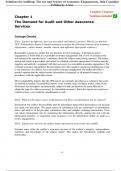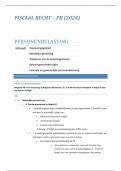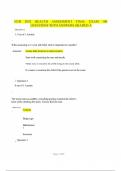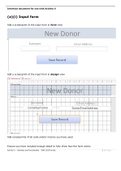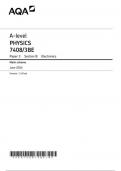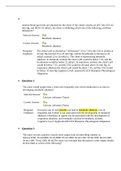Exam (elaborations)
Solutions for Auditing: The Art and Science of Assurance Engagements, 16th Canadian Edition by Arens
Solutions for Auditing: The Art and Science of Assurance Engagements, 16ce 16th Canadian Edition by Alvin A. Arens, Randal J. Elder, Mark S. Beasley, Chris E. Hogan. Full Chapters Solutions areincluded (Chapter 1 to 20) The Demand for Audit and Other Assurance Services The Public Accounting Pro...
[Show more]
